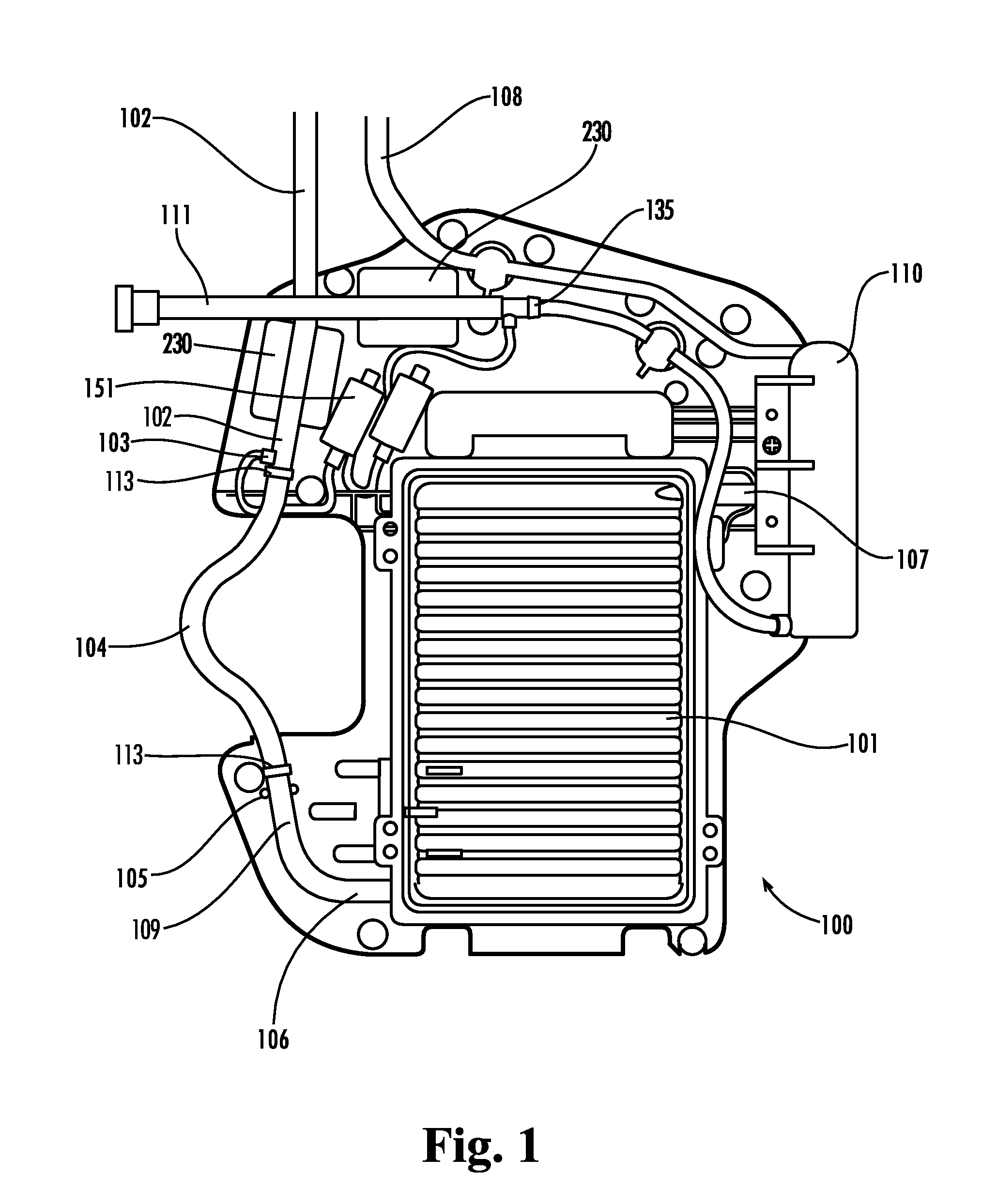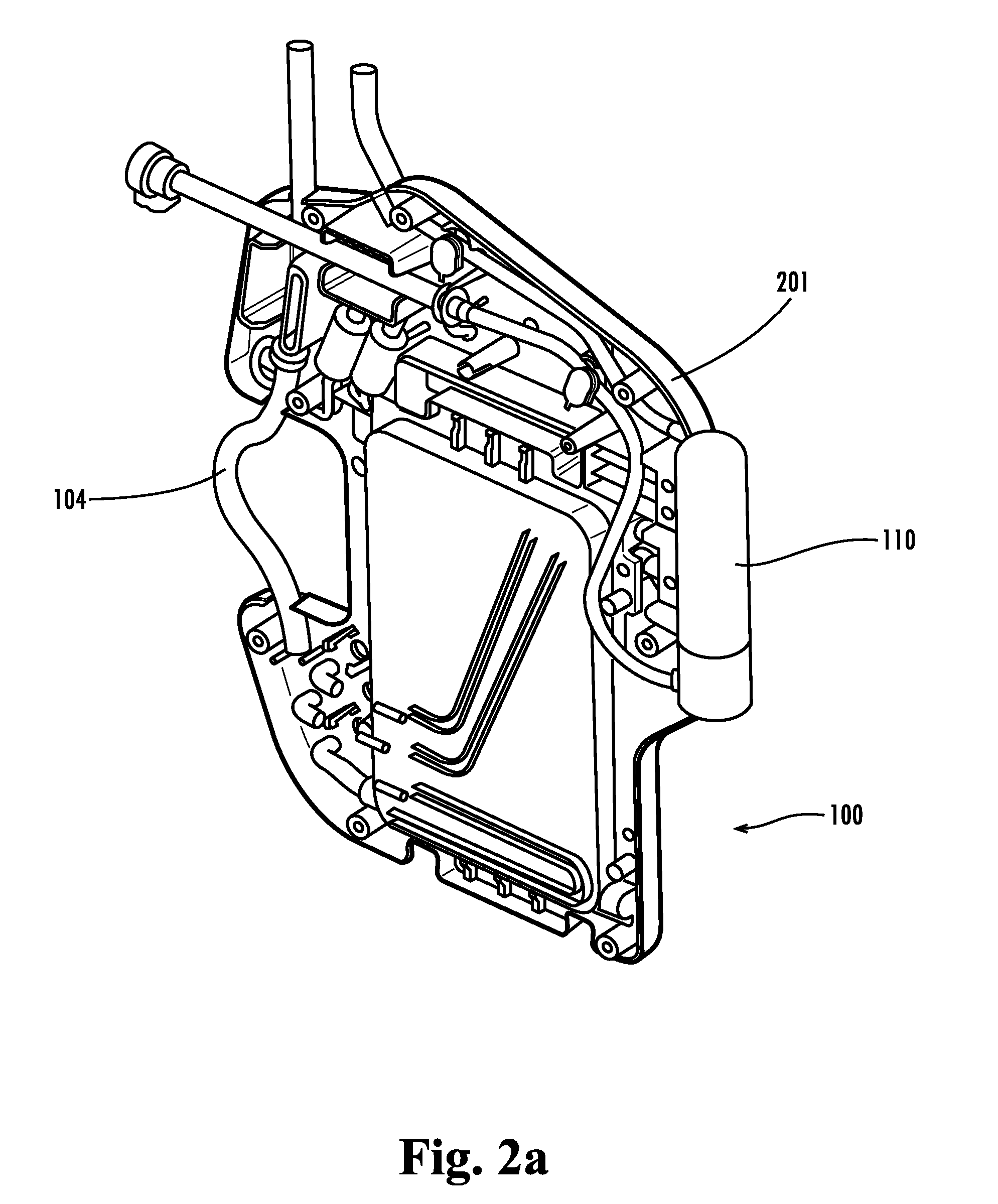Heat exchange system for a pump device
a heat exchange system and pump technology, applied in the field of infusion devices, can solve the problems of placing patients at further risk, affecting the efficiency of heat exchange, so as to reduce the risk of electric shock, improve heat exchange efficiency, and control the system simple and accurate
- Summary
- Abstract
- Description
- Claims
- Application Information
AI Technical Summary
Benefits of technology
Problems solved by technology
Method used
Image
Examples
Embodiment Construction
[0039]A disposable heat exchange cartridge and pump device for use during fluid infusion into a patient's body is described. The disposable heat exchange cartridge is removably coupled to an infusion pump device which provides not only the energy or power required to heat or cool the fluid being infused, but also provides, the flow generating pump and mechanisms for monitoring and regulating particular aspects of the fluid pumping system. More specifically, the disposable heat exchange cartridge may include a heating element disposed in the pump device by means that increase the efficient transfer of heat energy, while also providing safe and simple operation of the system. Alternatively, the disposable heat exchange cartridge may include a cooling element similarly disposed to cool the temperature of the fluid. Additionally, the disposable heat exchange cartridge has components that are advantageously aligned with their respective component mates on the pump system, allowing for si...
PUM
 Login to View More
Login to View More Abstract
Description
Claims
Application Information
 Login to View More
Login to View More - R&D
- Intellectual Property
- Life Sciences
- Materials
- Tech Scout
- Unparalleled Data Quality
- Higher Quality Content
- 60% Fewer Hallucinations
Browse by: Latest US Patents, China's latest patents, Technical Efficacy Thesaurus, Application Domain, Technology Topic, Popular Technical Reports.
© 2025 PatSnap. All rights reserved.Legal|Privacy policy|Modern Slavery Act Transparency Statement|Sitemap|About US| Contact US: help@patsnap.com



